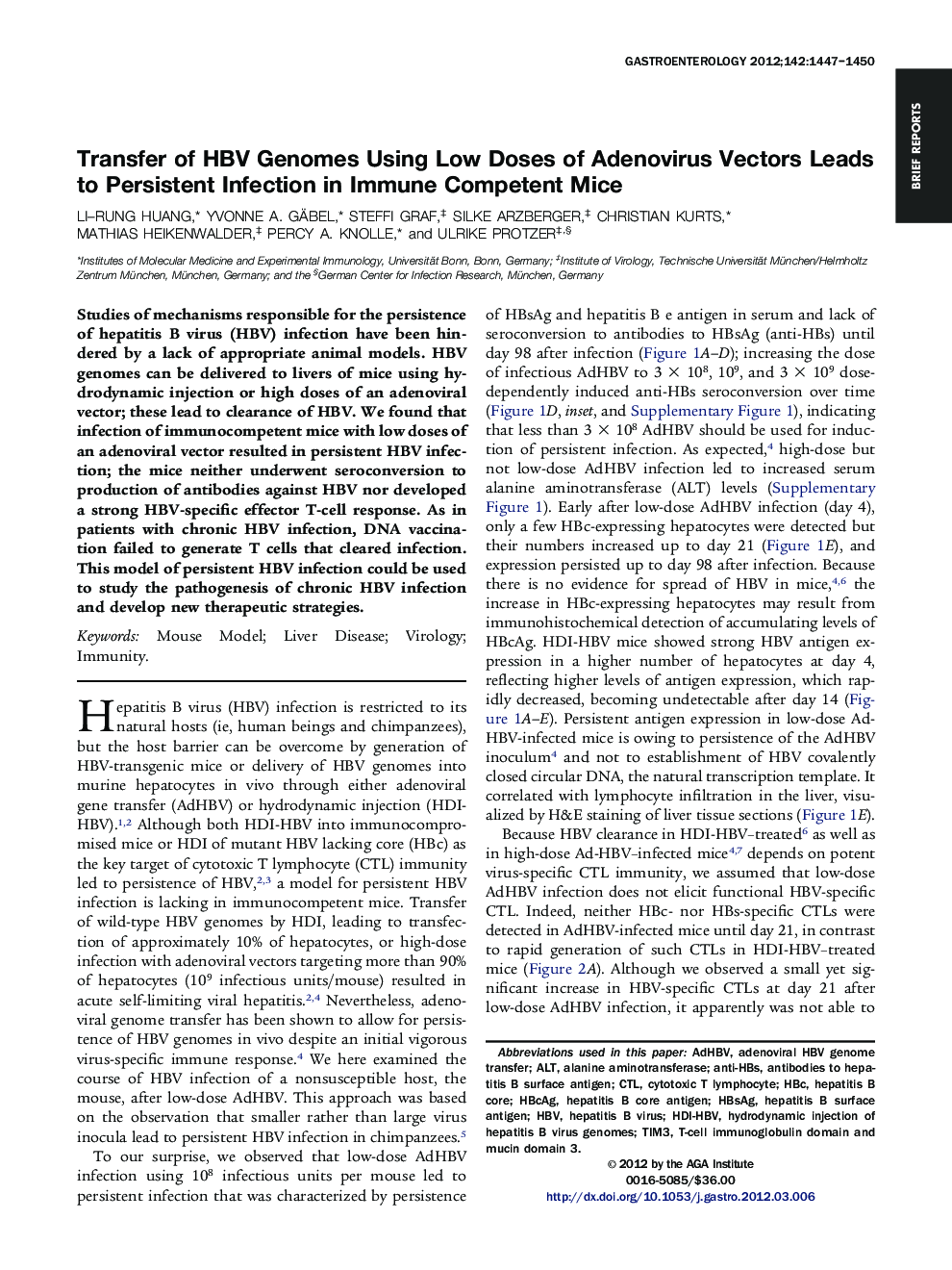| Article ID | Journal | Published Year | Pages | File Type |
|---|---|---|---|---|
| 3294127 | Gastroenterology | 2012 | 7 Pages |
Abstract
Studies of mechanisms responsible for the persistence of hepatitis B virus (HBV) infection have been hindered by a lack of appropriate animal models. HBV genomes can be delivered to livers of mice using hydrodynamic injection or high doses of an adenoviral vector; these lead to clearance of HBV. We found that infection of immunocompetent mice with low doses of an adenoviral vector resulted in persistent HBV infection; the mice neither underwent seroconversion to production of antibodies against HBV nor developed a strong HBV-specific effector T-cell response. As in patients with chronic HBV infection, DNA vaccination failed to generate T cells that cleared infection. This model of persistent HBV infection could be used to study the pathogenesis of chronic HBV infection and develop new therapeutic strategies.
Keywords
Related Topics
Health Sciences
Medicine and Dentistry
Gastroenterology
Authors
Li-Rung Huang, Yvonne A. Gäbel, Steffi Graf, Silke Arzberger, Christian Kurts, Mathias Heikenwalder, Percy A. Knolle, Ulrike Protzer,
